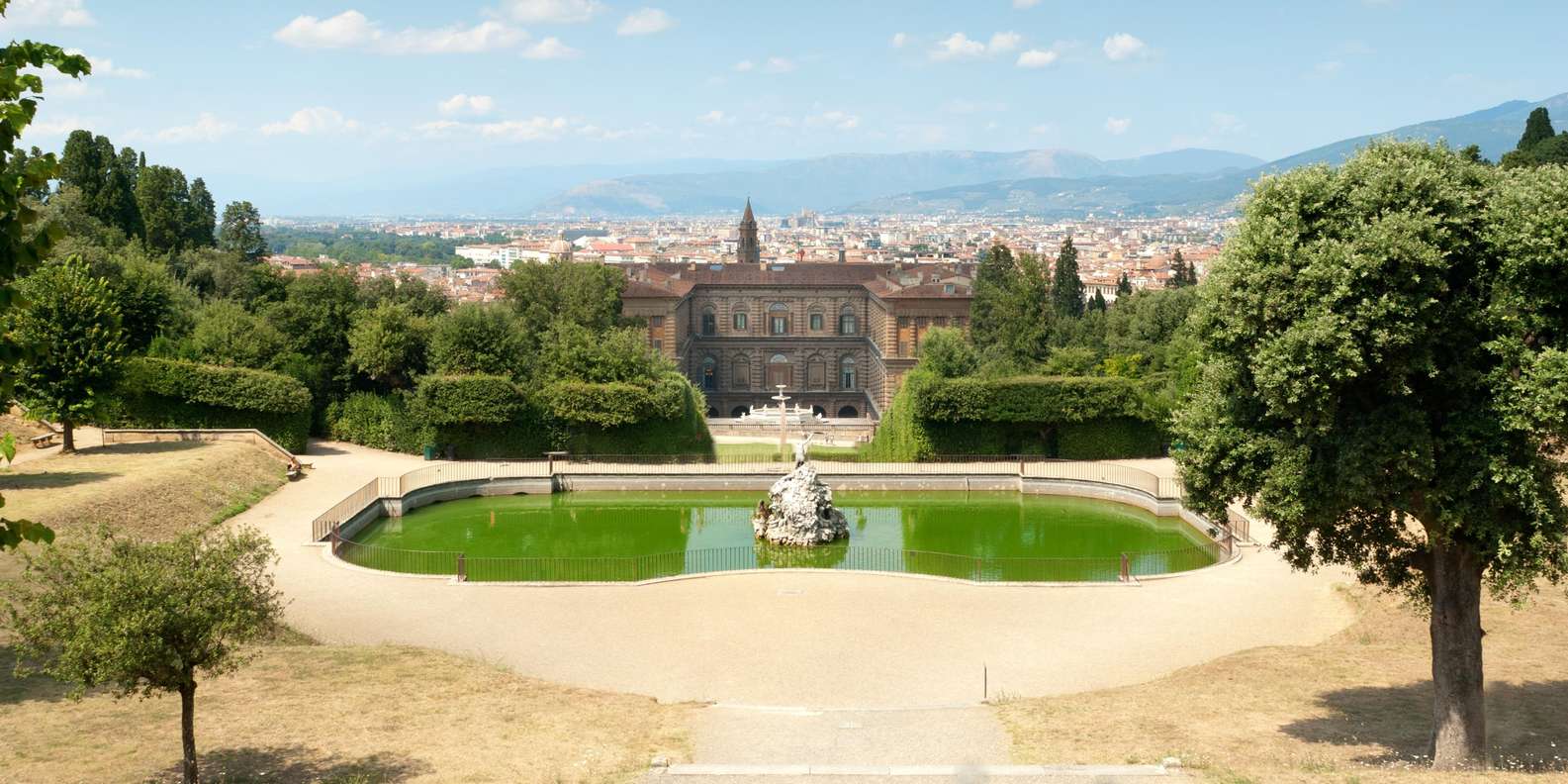Boboli Gardens, Florence — History, Stories & Visitor Info (2025)
Step into the Medici family’s open-air stage: cypress alleys, theatrical fountains, grottoes and hilltop views behind Palazzo Pitti. Use this guide to understand the history of Boboli Gardens, the must-see highlights, ticket options, and smart ways to visit.
Browse All Boboli TicketsQuick Overview
Where: Behind Palazzo Pitti, Oltrarno, Florence. Style: Italian Renaissance garden shaped by Medici taste and court festivities. Good for: art, architecture, landscape design, wide views over Florence, and quiet walks beyond the city bustle.
Why It Matters
Boboli became a blueprint for European royal gardens. Its amphitheater, axial avenues, and water works influenced parks from Tuscany to Versailles.
How Long to Allow
90–120 minutes for a skim of the main axis and viewpoints; 2.5–3 hours to include grottoes, Isolotto and museum stops.
A Short History — From Medici Backyard to Model of Europe
- Mid-1500s: Duke Cosimo I de’ Medici and Eleonora di Toledo expand the Pitti estate. Architect Niccolò Tribolo lays out early terraces and axes; after his death, works continue under Bartolomeo Ammannati and others.
- Late 1500s: Bernardo Buontalenti creates the fantastical Grotta Grande (artificial cave with stalactites, frescoes and sculpture). Festive water theatrics and seasonal spectacles animate the garden.
- 1600s: The long cypress avenue (Viottolone) extends toward the Isolotto, an island basin with mythic statues and fountains, turning the lower garden into a stage-set.
- 1700s–1800s: Dynastic change (Lorraine/Habsburg-Lorraine) brings updates and botanical interests. The garden opens to a wider public, cementing its role as Florence’s “green museum”.
- Today: Boboli anchors a cultural triangle with Palazzo Pitti and the Uffizi, managed as a single complex. Restoration keeps fountains and avenues alive for modern visitors.
Stories in Stone & Water
Boboli is full of symbolic theatre. Neptune’s trident rises over a former quarry amphitheater; grotesque masks grin from grotto walls; island nymphs and river gods line the water alleys. These weren’t just decorations— they framed court pageants, weddings, and diplomatic displays of power and sophistication.
What to Look For
- Amphitheater & Obelisk: The garden’s dramatic “stage”, later centered by an Egyptian obelisk.
- Grotta Grande: Buontalenti’s masterpiece—an illusionistic cave blending sculpture, painting and geology.
- Viottolone & Isolotto: A processional axis of cypresses ending at an island with fountains and mythic figures.
- Giardino del Cavaliere: Hilltop bastion garden with far-reaching city views.
Top Tickets & Tours

Reserved Entry + Audio App
Walk straight in and explore with a handy audio app—perfect for a first look at the main axis, amphitheater and viewpoints.
From €11.20
Book Entry Ticket
Boboli Gardens Guided Tour
Trace Medici stories, symbols and design choices with a licensed guide—ideal if you love art history with your landscapes.
From €45
Book Guided Tour
Pitti Palace + Boboli Guided
Connect palace galleries with the garden outside—context for patrons, artists and the grand outdoor “theatre”.
From €61.20
Reserve Guided Combo
Pitti Palace & Boboli Ticket (+ eBook)
One ticket for both sites with a digital guide—efficient if you’re planning a half day in the Oltrarno.
From €38.64
Check Combo Ticket
Uffizi + Pitti + Boboli (5-Day Pass)
Spread out the must-sees over several days and avoid culture overload—great value if you’re in Florence longer.
From €59.40
Get 5-Day Pass
Palatine Gallery + Boboli Tour
Pair painting masterpieces with garden vistas; understand how court taste shaped both rooms and landscapes.
From €98
See AvailabilityHow to See Boboli in 90 Minutes (First-Timer Route)
1) Pitti Courtyard → Amphitheater
Enter from Palazzo Pitti and walk straight to the amphitheater (former quarry). Notice the axial layout and the central obelisk.
2) Climb to the Knight’s Garden
Views across tile roofs to the Duomo; a great pause for photos before descending.
3) Viottolone → Isolotto
Stroll the cypress avenue to the island basin—mythic statues and reflective water create a stage-set effect.
4) Grotta Grande (Exit)
Finish at Buontalenti’s grotto near the Pitti exit—an unforgettable blend of sculpture, fresco and faux geology.
Extra time? Detour to the Kaffeehaus pavilion or the porcelain museum area for hilltop angles and quieter paths.
Practical Visitor Info
Best Times
Morning for softer light and fewer people; late afternoon for warm tones and shade along the alleys.
Summer can be hot—carry water and take shade breaks along the Viottolone.
Tickets & Access
Boboli is a paid site; some combos include Palazzo Pitti and the Uffizi. Mobile tickets are widely accepted.
Surfaces are gravel/steps in places; wear sturdy footwear. Wheelchair access is partial due to slopes.
Photography
Tripods may be restricted; hand-held works well. Grotta interiors are dim—brace against walls for steadier shots.
Etiquette
Respect statues and plantings; fountains are not for wading. Keep to paths and pack out picnic waste.
Save Time with a Pass
If you plan Uffizi + Pitti + Boboli, a multi-day pass lets you pace the big hitters without rushing. Try the 5-Day option: view details.
Ready to Walk the Medici Garden?
Choose a simple timed entry or add a guided tour for deeper stories. Free cancellation on many options.
Book Boboli Entry Now
